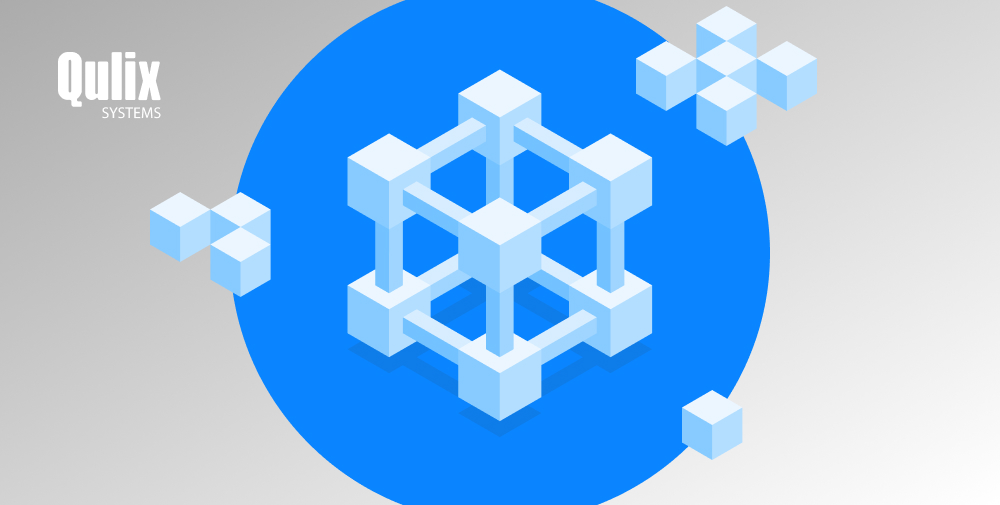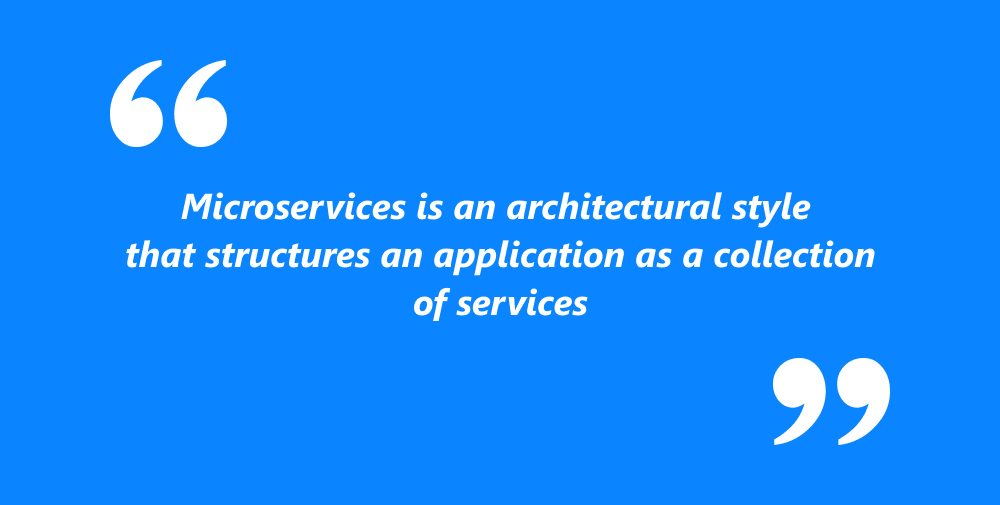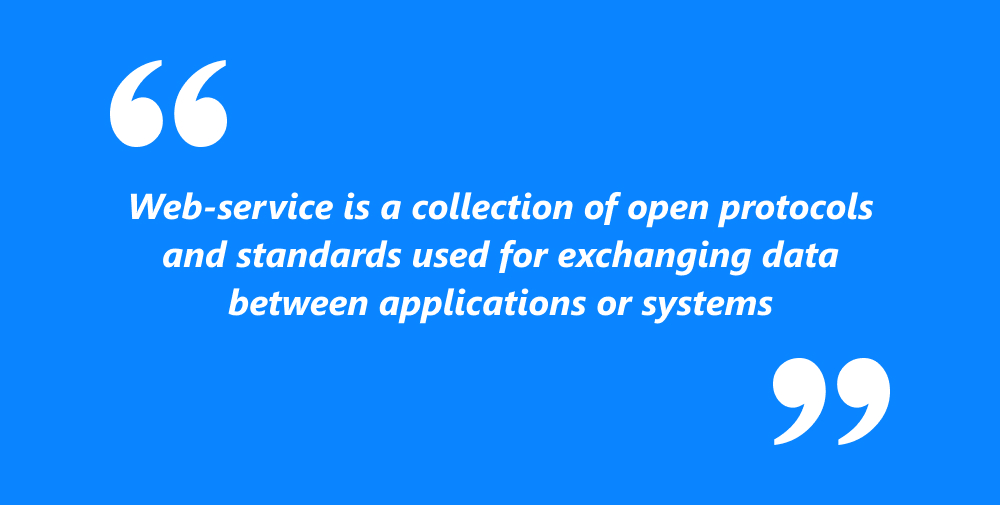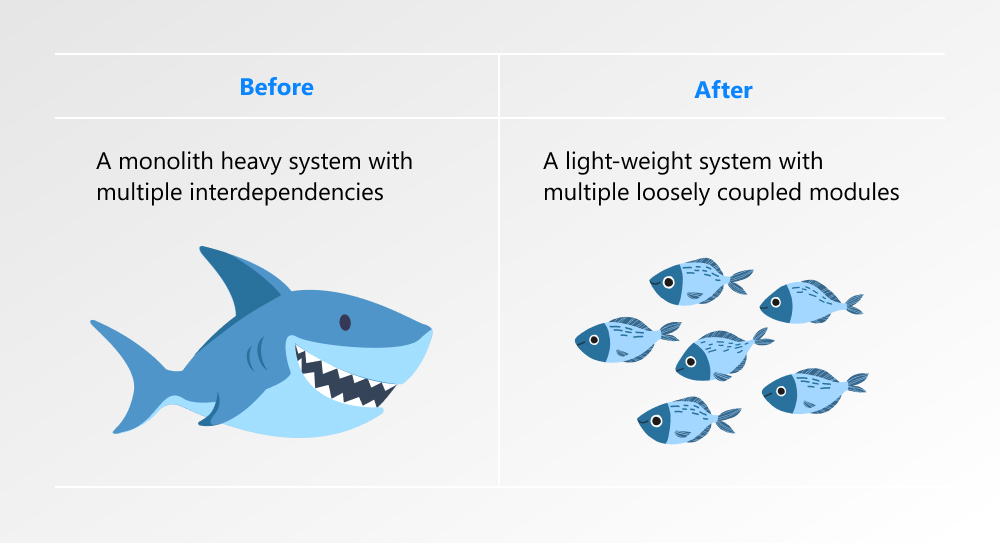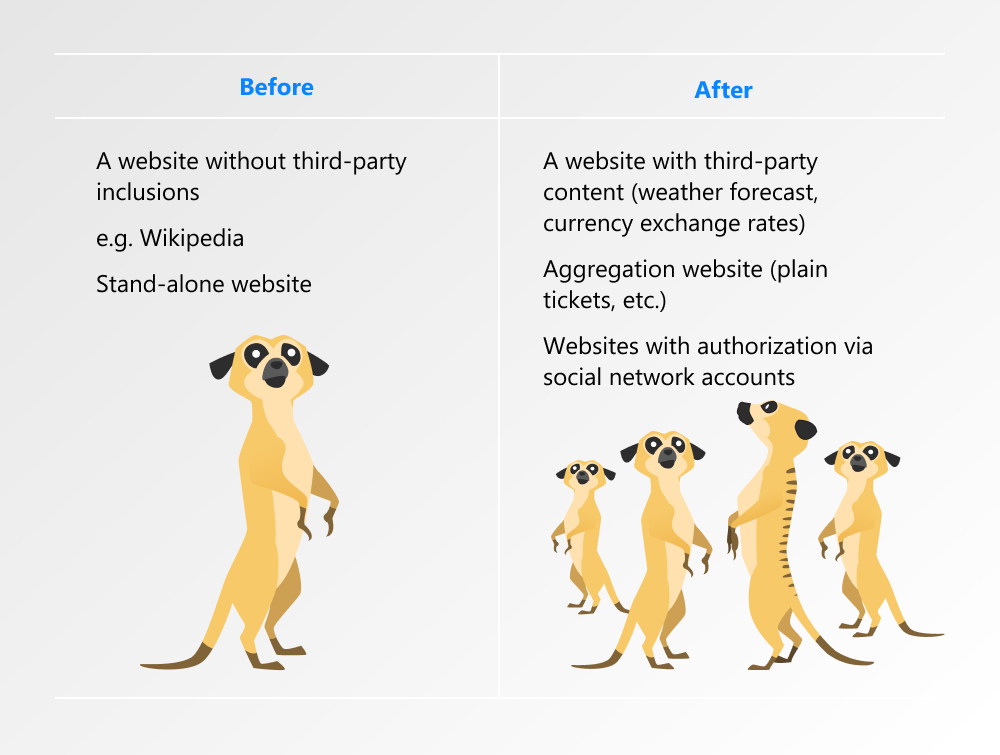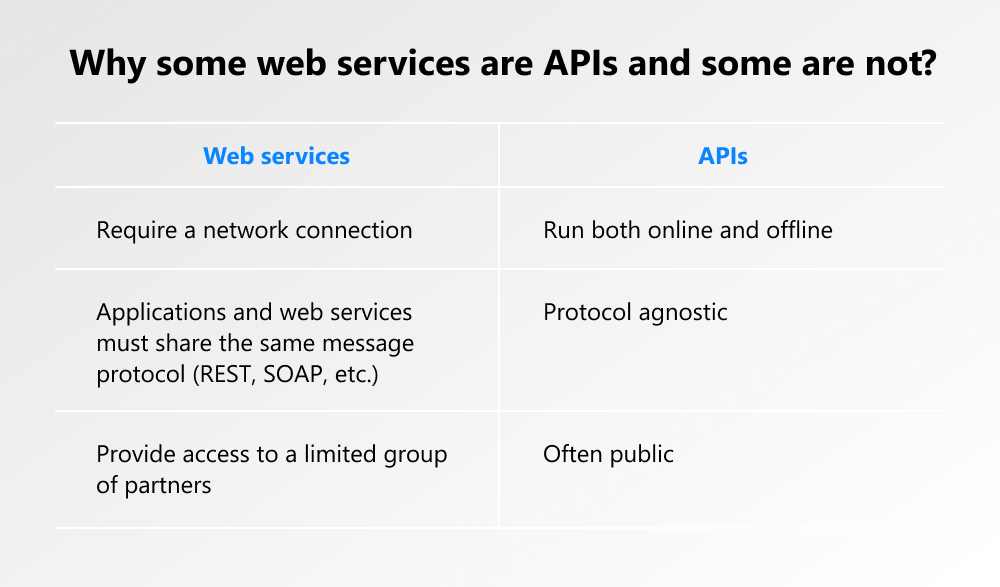The techs are developing almost at the sound speed nowadays. Now and then another piece of tech appears and you may find yourself at a loss – what’s this and what’s that? In this article, we will compare microservices vs web services. What are they, what do they serve for in software development projects, and how to tell one from another? Read on!
written by:
Veronica Chizh
The techs are developing almost at the sound speed nowadays. Now and then another piece of tech appears and you may find yourself at a loss – what’s this and what’s that? In this article, we will compare microservices vs web services. What are they, what do they serve for in software development projects, and how to tell one from another? Read on!
These two software development terms sound similar. That’s why many of us may be confused by finding out that they serve completely different purposes and have appeared independently of each other. Worry not, a bit of proper explanation – and you won’t be at a loss anymore. Not with these two, at least.
Microservices vs Web services: Definitions
Let’s start with the very definitions.
Microservices.io defines microservices as “an architectural style that structures an application as a collection of services”. These services are 1) easy to maintain and test; 2) loosely coupled; 3) entail some business functionality; 4) can be deployed by a single small project team independently of other project teams.
Now we’re moving to another term which is of interest to us.
“Web-service is a collection of open protocols and standards used for exchanging data between applications or systems (Tutorialspoint)”. If put simply, web service is a translation tool that allows the software applications written in different languages and running on different platforms to talk and understand each other.
What are Microservices for?
Microservices architecture has appeared to save the world from a bulky monolithic application with multiple interdependencies. When a system grows bigger (and every system grows bigger in time) it gets harder to scale it up, maintain and test all because of the extensive network of interconnections. You never kn0w what happens if you by accident delete one simple thing within such a bubble.
Contrary to monolithic architecture, in the microservices architecture, a system is a set of loosely coupled modules each of which refers to a specific business function. The modules are so independent that they all can be developed using different technologies and it won’t affect the whole system operation.
If you’re still unclear, we have a picture for you describing what systems are like BEFORE and AFTER the implementation of microservice architecture (Example 1).
What are Web Services for?
Web services are another component of an efficient up-to-date system. While microservices entail some business function in themselves and facilitate the communication within the system through the elimination of redundant interdependencies, the web services enable this communication.
Web service is a web-oriented technology that allows programs to talk to each other using standard formats (XML, JSON) and via special protocols (SOAP, REST). In other words, it enables integrations. The technology has gained huge momentum and as a result today there’s hardly any digital system without third-party integrations. Furthermore, web service is used to unite microservices, monolithic applications, and other components into a large-scale comprehensive application.
Another great thing about web service is that it “functions as a bridge – regardless of whether the connection is cloud-to-cloud, server-to-server, server-to-premises, cloud-to-premises, or client-to-server” (DreamFactory). That is why enterprises widely use web services in their work as they allow connecting multiple software components located in different geographies.
It’s time for Example 2. Let’s find what systems look like BEFORE web services implementation and AFTER they are running full blast.
Combining Microservices and Web services
Despite being completely different in function, microservices and web services do just fine together in a software development project.
To see how they manage to do this, we need to learn more about how to use microservices and the rules under which they operate.
As you know by now, in microservices architecture, a traditional monolith is broken down into components, each of which refers to a specific application function. Instead of a single piece of source code, an application consists of almost autonomously running modules (or microservices).
Yet, you cannot isolate modules completely. They still need to exchange some data and to do it software developers use APIs, which connect modules without depriving them of their autonomy.
You may think that we’re off the right track now, ‘cause there have been no web services so far in this story. Here they are. Web services are actually API’s by nature. As Nordicapis puts it, “every web service is an API — since it exposes an application’s data and/or functionality — but not every API is a web service”.
If you’d like to be able to distinguish between these two, here’s the basic info. It is not the focal point of our article, so we place here only the essentials which will give you a rough idea of the concept.
So, the bottom line is – if you wish to combine web services and microservice-based application, you can very well do this, but you have to remember 3 simple things:
- The application won’t run without a network connection.
- If your system doesn’t let in just anybody, you can run web services, too.
- Remember the protocol should be the same both for the application and a web service.
Wrapping it up
As you can see, microservices and web services are two different things that serve completely different purposes. To see their difference clearly, just imagine a residential area, in which microservices are separate houses and web services are utility system. The houses can vary in size and can be decorated and furnished in a completely different manner (like microservices). However, a common utility system fits them all and allows them to be a part of a single whole.
Generally, microservices are connected via APIs. Web services are APIs, but not all APIs are web services (to find more about APIs, hit this).
Yet, despite the differences, both microservices and web services help modern-day websites and software products/systems run smoothly no matter how huge and comprehensive they may be and make great content easily available to us.
For more information about our projects in which we use both of these notions, please contact our Support team or visit our website. We also share a lot of valuable insights in our blog and the Portfolio section.


